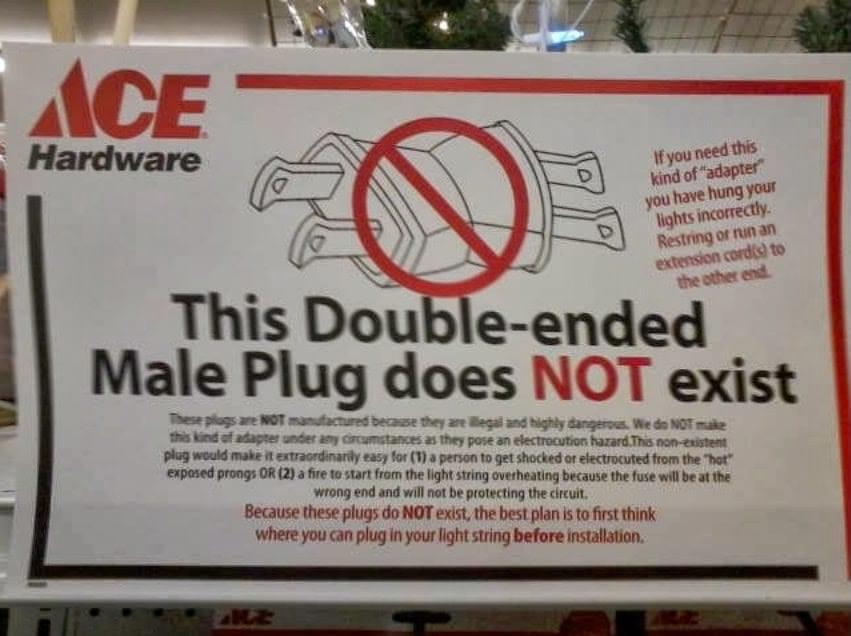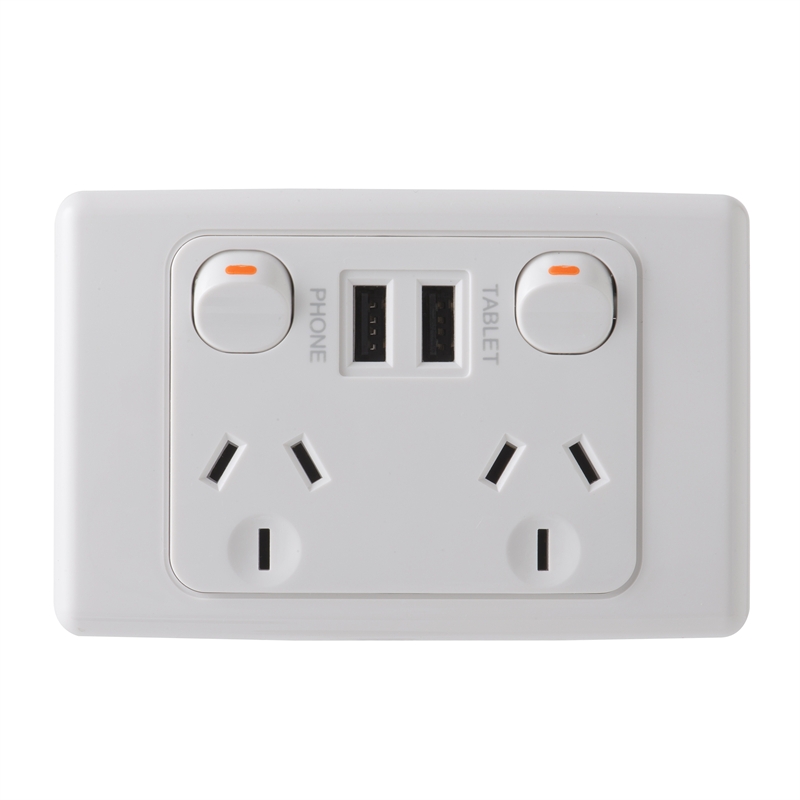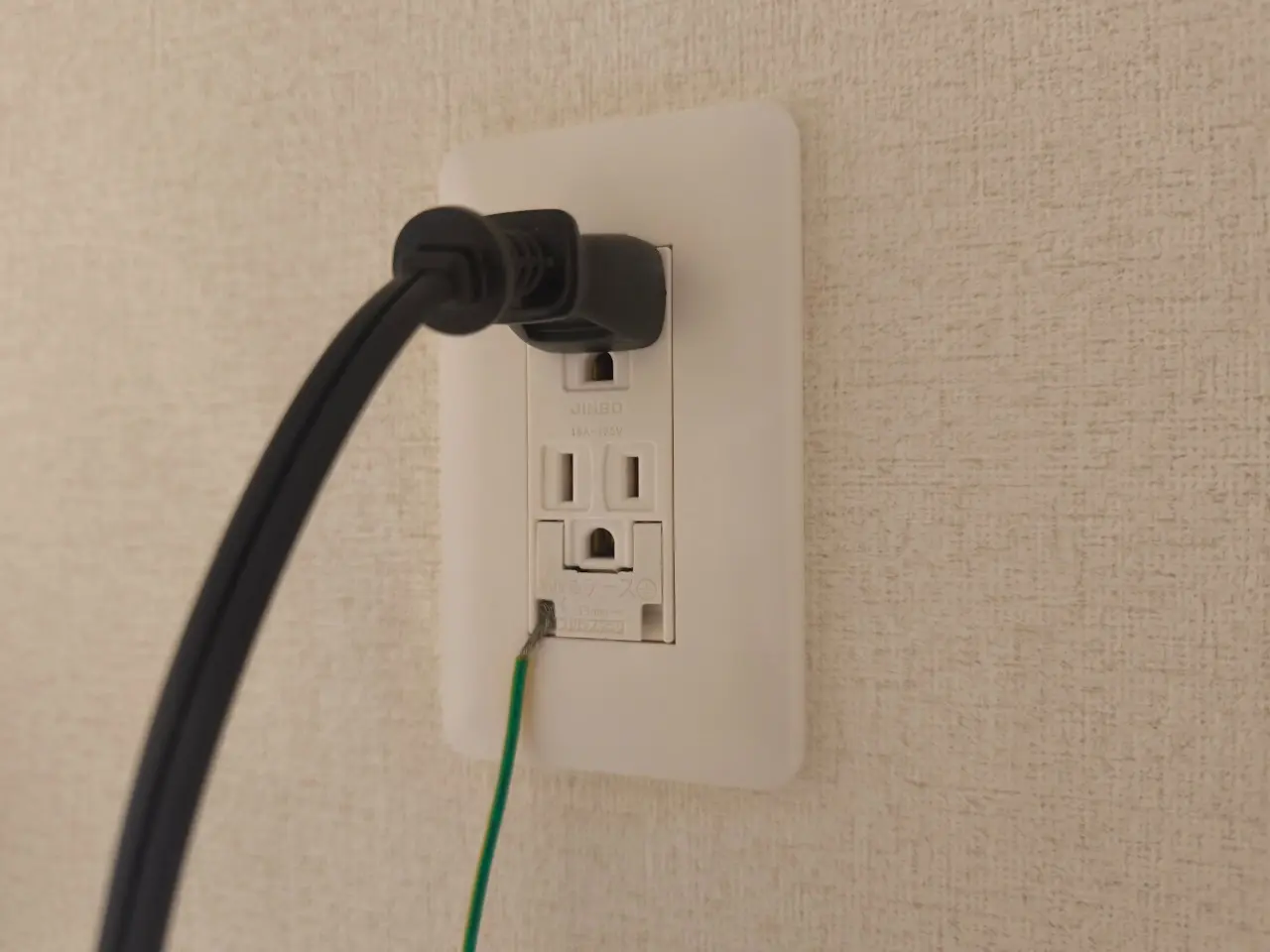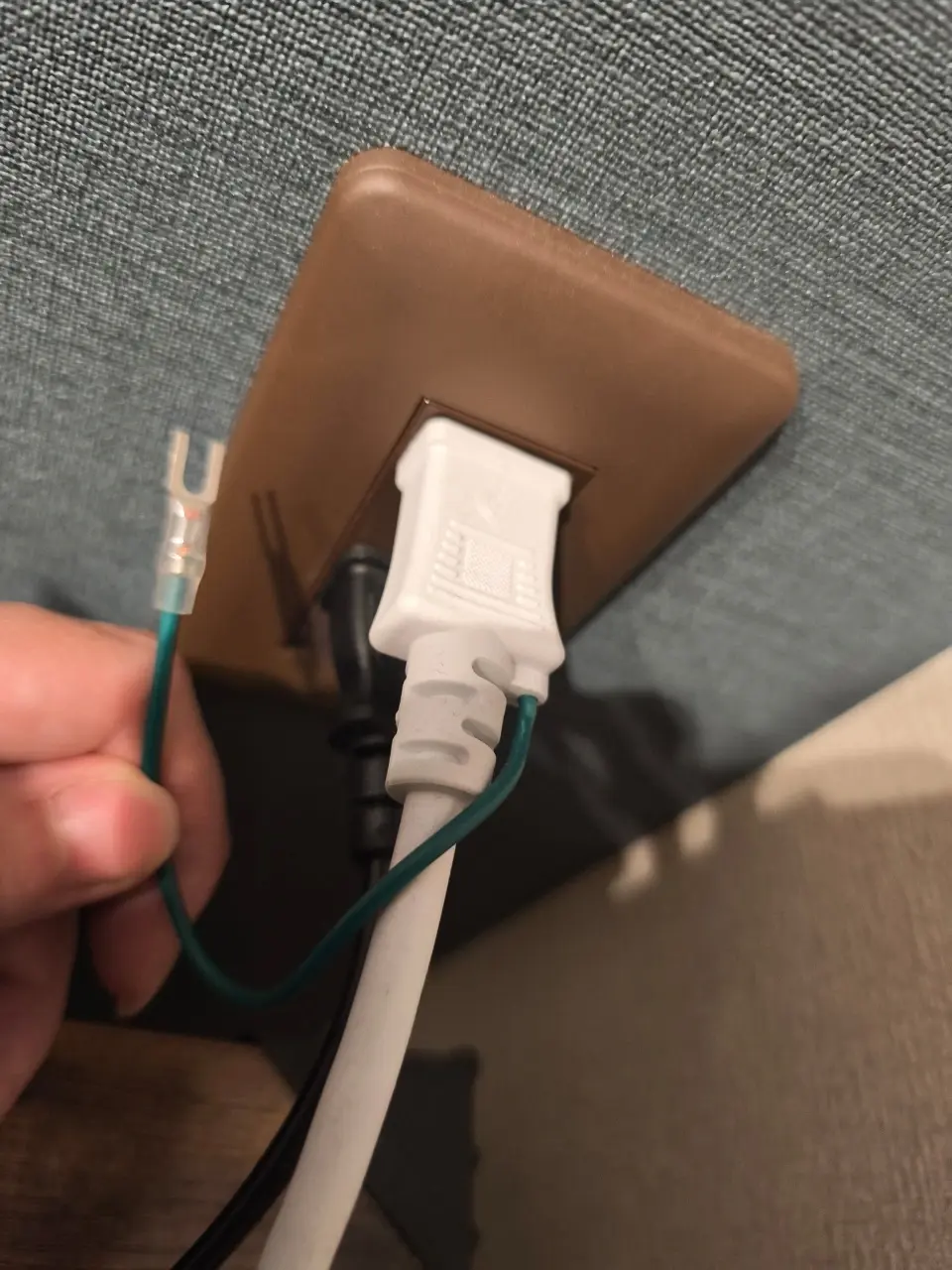The British one. It has a switch and a fuse, and later versions have age-verification so your kids can no longer plug in your adult toys.
Had me in the first half. Well played.
And your adult toys must be licensed, of course. To protect the kids.
Its important you don’t allow them access so you need to keep them on your person in a place thats very hard to access. So hard.
Your last sentence is a double entendre?
double in your entendre.
My toys are wireless…
You’ll need a broadcasting licence for that, mate.
Only if they’re charged.
P.S.: since battery cells need to be disposed properly, they are now an 18+ purchase.
Age verification on batteries?
These are the best anyway
Nah, they’re too power limited. What you really want will require a 3 phase hookup to the bedroom.
Just be careful, three phase hookups = potential hurt feelings and messy drama.
I’m actually kinda surprised that more don’t have switches, but I suppose if you have radial rather than ring circuits you don’t have to play ‘hunt the appliance that tripped all your switches’ quite so hard
Hey now, let’s not give BSI and NESO any ideas mate.
Real
In my opinion it’s Type-F
Because:
- It’s bi-directional
- It’s grounded and ungrounded plugs use the same socket
- It’s already widespread (50+ countries) source
- Your fingers can’t touch the live wire as you’re plugging in a wire
- It’s recessed
- Low footprint
- Accepts Type-C
What’s the difference of C and F type?
C is mostly for low power devices
F is basically a heavy duty upgrade of C, it’s got grounding on the side and can handle 16A (ovens, heaters etc.)
Don’t you get numpties plugging F appliances into C sockets then complaining to customer service that the induction stovetop doesn’t boil water for tea fast enough?
no, because it’ll just trip fuse, and stoves are wired directly anyway
You cant the plug is thicker
Can you plug C into F?
Yeah. You cant plug f into c because f is thicker by a bit but c goes into f.
The type-C shown in the picture is also not the only form it has and maybe partly misleading, the plug usually is significantly smaller and flat, and power strips can feature multiple of those in less space.



Agreed. The best.
I see a lot of your comments about F being objectively same or better compared to G. The only thing I’d throw into the mix is the socket switch feels so logical, I’m really surprised it’s not more standard.
High frequency use case: I don’t need my microwave on all the time showing me the time, so I switch it off at the socket unless I’m using it
Low frequency use case: before going on holiday I switch all the electrics off at the sockets
I never understood why every appliance in the kitchen needs to display the time. lol
Why not switch off the fuse in the holiday case? More time efficient.
Socket switch isn’t really a feature of the socket itself. I’ve had schuko sockets with switches. It’s just not as common
Furthermore, appliances compatible with Type F are almost always compatible with Type E as well, it’s just a matter of including both grounding mechanisms which they all do to avoid designing multiple cords.
I haven’t yet visited the UK so the only time I’ve had trouble plugging in something in Europe is in shudders Italy.
Bi-directional is a double-edged feature.
It means that there is no reliable way of identifying line and neutral wire, which requires more complex double switches downstream.
Also, F is unnecessarily clunky and big and hard to make a weather-proof version of because of the complex shape.
And type-E. Most EU plugs are F-E compatible, because countries go about alternating them. Spain F, France E, Germany F, Poland E. You build a plug with a hole for the E ground bolt and a cutout for the F side contacts.
Hear me out, type L, the one in the middle, is the best socket, as it has all the things you talked about, but also accepts Italian plugs.
Type L bipasso (the one on the side) instead is the most space efficient, while retaining type C compatibility and grounding. Type L plugs also have plastic bits at the end to avoid contact with live wire (like UK one).
As the least biased swiss person. Type J (or type N, Idk) is so much better. We put three plugs on the same surface as you have 1. I am always frustrated to see how impractical your plugs are when I go to the EU
Jawoll!
It’s bi-directional
That’s bad.
Every device produced in the past few decades doesn’t care which wire is live.

Damn homophobes…
Clear, informative and solution oriented. I wish all signs were this good.
Why? It doesn’t make any difference with AC
The actual electrical device can be designed such that it depends on exactly which direction is live and which is neutral.
Imagine a circuit loop that, as you follow along the circuit, has an AC power source, then a switch, and then the electrical appliance, leading back to the AC source it started from.
If you design the circuit so that you know for sure that the live wire goes to the switch first before the actual load, then your design ensures that if there is a fault or a short somewhere in the appliance, it won’t let the live power leak anywhere (because the whole device is only connected to the neutral line, not the hot live voltage that alternates between positive and negative voltage). It’s safer, and is less likely to damage the internals of a device. Especially if someone is going to reach inside and forgets to unplug it or cut power at the circuit breaker.
In practice tons of outlets are wired the wrong way around.
F actually has a convention for the socket, which is probably ignored even more often, but I would never trust live and neutral not to have been swapped somewhere regardless of outlet.Just forcing plug designers to consider live/neutral being randomized in a very obvious manner might be safer in the long run than working on a partially broken system where someone manufacturer might be fooled into trusting it.
Could you give an example of such a device? Seems like a bad design
A simple lamp can demonstrate.
You have both live and neutral lines in the cable, coming up to a switch, which can either open the circuit on the live line or the neutral line. Then, the lamp itself has a single light bulb as the load.
If you place the switch on the live line, then the energy of the live line stops at the switch, with only whatever lower voltage is in the neutral line to actually be connected to the light bulb and lamp assembly.
But if you place the switch on the neutral line, you’re leaving the entire lamp on the voltage of the live line, which gives the voltage more places to potentially short circuit. If you were to take a non-contact voltage detector, you’d be able to detect a live voltage in the line leading up to the bulb, even when it’s not turned on.
You generally do this with the in-wall wiring and switches, too, and make the wall switches break open the circuit on the live line, not the neutral line. It’s just a better practice overall.
And no, the neutral line is not totally grounded, so it can still pose a danger, too. But safety is exercised in layers, and putting the switch on the live line is the better practice.
That’s a lamp in theory, but do you know of any actual lamps being sold where this matters?
in the US it’s fairly common, so probably some American manufacturers would do it that way
This is an entirely theoretical problem that just doesn’t exist in practice. Just to be clear, for it to short circuit, it’s needs to find a path to ground. It can’t just “go somewhere”. Just because the line is longer didn’t make it more dangerous for it to “just exist”. There are regulations for wires, which include frankly absurd safety margins, regulations for the electrical devices that are not optional either (CE compliance for example). It just complicates this for basically no reason to have keyd outlets.
If there’s electricity reaching the bulb it would be lit no? So if I place the contact upside down, I wouldn’t be able to turn off my light?
It’s not electricity, exactly, but it is a higher voltage that is different from the average of everything around it. Electricity needs a closed loop to flow, and breaking open the loop with a switch means that no electricity flows, but the voltage of the live line goes up and down, creating an electric potential with anything that might be at a different voltage, if a conductor touches both.
it’s a bad practice to design appliance in such a way to assume that neutral will have low voltage, because in case of neutral failure in three-phase circuit you can get full voltage there, and there can be a couple of volts difference (sometimes more) between neutral and ground even in normal circumstances
it’s better to cut off both live and neutral at the same time anyway, especially if there’s no standard which is which. also, as device designer you don’t know if it’ll be used on a circuit that has neutral and phase where you think it’ll go or not. (ie british appliance used on unpolarized circuit, like type F. adapters exist)
it’s a bad practice to design appliance in such a way to assume that neutral will have low voltage, because in case of neutral failure in three-phase circuit you can get full voltage there,
Who’s using three phase in a setting where these types of plugs are used? In the US, at least, three phase circuits use very different receptacles and plugs.
The fact of the matter is that the switch has to be placed somewhere. And it’s safer to place the switch between the load and the live wire, rather than between the load and the neutral wire. Designing a system where the live and neutral can easily be known makes it easier to do the safer thing.
you don’t have to have three phase circuit to be affected by floating neutral in three-phase substation upstream. in some places in us there are 208v interphase three-phase circuits, which give 120v phase to neutral, which is distributed as a pair of wires as single-phase circuit. this is also normal way to deliver single-phase power in europe, as it’s most efficient use of conductor. (from 400v three-phase circuits) in case more power is needed than single-phase circuit can deliver, three-phase circuit is installed
if there’s switch on device, it’s 2p1t meaning both phase and neutral are switched. if it’s permanent, non-pluggable circuit, like lightning, it’s okay if only phase is switched (neutral is connected permanently)
This is entirely an US problem created by the “center tap” nonsense. Nobody else I’m aware of uses that, let alone with that other. The outlet in question (type F) I’m only aware of being in use with one phase of a there phase supply plus the neutral, or just “the” phase and neutral. Note that in the second case, even if a house or apartment only has one phase wired to it, it’s still generally part of a three phase supply, but the other phases just aren’t wired to that particular place (incredibly rare these days, but might be the case for very old homes/installations).
Now the real reason for it being safe: The neutral is required to be wired to ground at the main breaker panel. With installations newer than 2000-something, every circuit has to be GFCI protected. With even newer installations having even more granular requirements (not sure on the specifics).
Yeah, you’re probably right. I’m in over my head on this discussion.
I am reminded of my first day in an electrical engineering circuit theory class, when the professor made very, very clear that he was teaching us theory and fundamentals, and that the real world of electricity required a lot more safety built into the procedures and designs, because not everything behaves the way the undergrad textbook describes.
So I’ve learned something new. Thanks.
Some people say it does with certain devices but I’ve never had anything I’ve run into. The American outlets have been used as bi-directional in most instances. (With 2 prong). If they had a ground then you can only go in one way. But that said… Obviously a cord without a ground can still plug into an outlet that has the ground set up. If the device wants the current to go in a certain direction they use one with a slightly larger prong on one side, but if you pick up any phone charger in America, you can plug it into any outlet any direction.
If the device wants the current to go in a certain direction
That’s not how AC works
they use one with a slightly larger prong on one side,
That’s not Ground, it’s Neutral. Neutral is sometimes bonded to Ground, but they are fundamentally different things
- Yeah it’s just a potential difference, not a one directional flow really
- No one said it’s ground? The ground is on the third prong
deleted by creator
In the particular case the sign is trying to prevent it’s to keep lazy idiots from electrocuting themselves stringing up Christmas lights.
deleted by creator
Why?
Why?
No it’s bi-winning
Type K. I mean how can you say no to that face?

It’s the only one that looks happy to be there.
:D
Type I
Earth pin doesn’t cause the plug to murder your feet like the UK plug.
Angled pins to prevent cross polarisation.
Localised power switch per socket so you can turn something on or off with your toe and not bend down to unplug it.
Looks like a ghost face and when in the double gang formation the switches when on looks like the plate is high.

The main problem with type I (and a few others) is that it’s not recessed. If it comes loose a bit, you still have the problem of exposed live pins.
And the thin pins means that with any weight (wall-wart, etc.), it starts to come out.
Doubly so if it’s set into thin plasterboard that already wobbles.Pins are insulated since 2003.
Also:
Thin stamped construction is cheap, but can still be fitted with sleeving on the live (active and neutral) pins like UK & europlug, but not US plugs. This prevents objects or fingers getting to live pins on a partially inserted plug.
Industry has agreed that leads exit either straight out, or down-and-right, so there is no conflict for horizontal or vertical sockets. Sockets are universally installed earth-down.
Reasonably compact.
Yep us Aussies have the objectively best plug.
New world solutions. I agree.


Some images of the plugs, since I didn’t know what they looked like.
It was mentioned the pins started being insulated like that second image 20 years ago, but going by the images I found the older uninsulated style is still more common. This is ofc a major shock hazard when plugging in your stuff.
Even with the insulation, you can still reach under the half inserted plug, just less easily and maybe only if you have smaller hands (like children).
Fundamentally flat sockets are doomed to be shock hazards, compare it to the recessed sockets where the entire surface the contacts insert into is cut off from reach before the pin insertion starts, and on top of that the pins of say type F have been insulated for so long many don’t know there were uninsulated variants.
Another bonus of the recessed style is the plug doesn’t stick as far out of your walls. For extension cords it’s probably a bit bulkier, but when you sink the recession into the wallbox of the outlet you can get as flush as the width of the cable with an angled plug.

Also pretty sure you can step on angled type I plugs resting on their backs. The recessed plugs usually have grips on top so can’t rest on their back even when angled. Their pins are also ball-shaped on the end, type I looks quite angular and more painful.
I live in Australia and I just did an audit of the power board that was sitting next to my bed. All four devices and the power board itself all have the insulated pins. I can’t remember the last time I saw one that didn’t have insulated pins. I’m sure they exist, but they are not common.
We also have RCD on all our circuits so if someone is able to short the pins, it will trip within 20ms or less.
Ironically, those are upside down.
Which usually indicates Chinese Type I - they don’t insulate pins but do put earth on top.
We insulate pins but live/neutral is on top.
Oof, I see.
Kinda a bad look for type I when some of the users follow a different spec and ruin all attempts at improving safety or even keeping standards like earth being down.In comparison the european plugs are moving closer together, for example F+E combo plugs are increasingly common.
I’m a G guy at heart but use I now. My main issue is how easily the pins can bend.
Oh, a list of things each identified by a different letter, better put them in a completely random order.
Easy. Type G. For safety. If you’re worried about night-time attacks from ninja you can leave a few plugs by your bedroom door and windows with the pins upward. They will rue the day they entered that room in the dark!
Type G. For safety.
G
Type F.
SCHUKO PLUG SUPREMACY FOREVER!
Type E and F plugs are not really a thing anymore, today it’s more common to find combined Type E/F plugs.
Fuses in british plugs are a mistake and only a requirement because of sketchy practices allowed in british electrical code immediately after WW2. Nobody else does that because nowhere else electric code is built in such a way that it is necessary. Switch seems to be mildly useful tho
F plugs are the only type I’ve ever seen in all of Scandinavia, Germany, Spain and The Czech Republic. Never in my life have I seen an E plug or anything resembling a variation of E+F combined in any way. Only F. I don’t understand how you can say they “are not really a thing anymore”.
You mean not a thing in the UK?
UK uses type G. Type E/F plug has both contact for grounding pin like in type E and two sliding ground contacts on side like in type F. Sockets are either E or F, and i’ve mostly seen E
Oh you mean the plugs, as opposed to the sockets? Then I misunderstood. 😄
E is only common in five countries, F is more widely used.
I’ve seen E in France.
Not really the point, what I’m saying is that F sockets are definitely still “a thing”.
Oh, yeah, absolutely. The best thing. I just wanted to say that E type plugs are also in use.
The best thing 😆 Yeah they are pretty great. Admittedly I am biased 😅
I thing it is about the cord vs the plug. The plugs are as they are in the picture, but most cords are in F+E configuration. That is, there is the ground plates on the side of the cord (F) and there is a hole in the cord with a springplate to connect to the ground thingy in thr plug (E). I have two extension cords at home of the same brand, one in E and one in F configuration, but all my cords are compatible with both. I’m a bit unsure on this, but I may have seen a plug with E+F configuration in a country which usually goes E, but definetly never in a country with F config.
I think you mean plugs vs sockets. I was talking about sockets, but I mistakenly wrote plugs. I think I misunderstood the original comment in that regard.
Went to Poland for a few days and encountered the type e plugs and I immediately hated them because they interfere with chargers and they weren’t reversible.
Fuses mean protection is localised. If the socket is good for 13A, but the cable is only safe to 5A, you can fuse at 3A or 5A, and know it’s safe.
This is partially useful for extension leads. We don’t have to worry about overloading a multiway extension. If we do, it will pop a 10p fuse, rather than cause a house fire.
Or you could just use thicker wires like everyone else, or drop the use of ring mains, which is the actual reason why fuses in plugs were introduced. The reason why this was done was post-WW2 copper shortage. In other countries you’ll see more likely star type circuit
Are you really going to change the fuse in the receptacle when you plug a different cable in?
Low amp rated extension cords are dangerous unless they have a fuse in the cable. Best practice is to always use a cable that is rated higher than the circuit breakers.
The fuse is in the plug itself. It goes with the cable. That’s the point of it! 🤣 It lets you down rate your cables from the breaker rating.
this is totally wrong. type F (“schuko”) is the main standard in europe.
It’s obviously the one in the country I live in. All the others that I have had zero experience with are from Satan.
I really think we should give japan more shit for this. Type A is terrible on it’s own merits, they don’t even polarize it. But then they have the gall to use two different frequencies with the divide in the middle of Honshu (the big island with the major cities). And unlike reasonable people they don’t do a “50 hz gets this plug, but 60 gets a non compatible one”. No, both use the plug that North America phased out over safety concerns.
But to answer the question, type B is nice and homey, but types I and N feel a fun mix of weird and foreign but close enough to be interesting. Most of the rest just feel like various “yeah it’s a circle with two circular prongs all right”
does type A just have no ground?
Yup. Japan also has grounded outlets, though, although they are comparatively rarer.
I recently had a house built, and most of the outlets do support grounding.
However, it’s not very common to actually use them — many appliances don’t have grounded plugs, or the shapes don’t match.
I’d say only things like washing machines, microwaves, and rice cookers tend to use them.


are house fires and electrocutions common occurrences?
deleted by creator
Not as far as I’m aware.
I see the left side of just slightly bigger than the right, so I expect one of those sides to be the ground
You’d think so, but the ground will either be at the bottom of the outlet, requiring a separate cable, or Type-B.
That’s only on homes that have updated wiring codes.
My grandma still has the old aluminum wiring with type A. It’s annoying as shit because there are so many grounded plugs and only so many adapters that take the grounded plug.
And then don’t ground it. Fuck safety right
There is the GFCI in the switch box, but yeah, both gfci+grounded would be preferable.
A GFCI won’t do squat without PE connected
Where? That is the most scuffed ground ive ever seen
Nope, just live and neutral.
Nope, the ground is a separate wire that just dangles there and never gets connected. Over the last 25 years I don’t think I’ve ever seen a utilised ground wire.
In North America, neutral is connected to ground. It’s the larger pin on a polarized plug. Some devices don’t use it; these usually don’t have a conductive outer surface.
It’s the oldest standard on the list, and is still around older homes in the USA. They used to be equally-sized (aka unpolarized), but later on they had a bigger hole for neutral (polarized). They’re not up to code anywhere anymore though, you’ll only see them in older houses before the grounding pin was required.
In the USA, there’s a ground in that the neutral wire is connected to ground. Devices that take advantage of this have a slightly broader neutral pin that won’t fit into the hot pin.
As someone who lived in the UK, the British one is far too chunky, especially in an age where most devices don’t use the mandatory earth pin (which is mechanically necessary to open the shutters in the socket). The one place it has an advantage over Europlug is in aeroplane seat sockets and such, where it stays in more firmly.
Having said that, the Swiss and Brazilian ones manage to get earthed connections into a slender footprint (the Swiss is compatible with unearthed Europlug, not sure about the Brazilian though it may be smaller). Apparently the Brazilian socket was proposed as an international standard by the IEC, though only Brazil adopted it.
Earth pin is a safety feature and a good one at that.
South Africa is also slowly adopting Type-N.
Europe was supposed to, but abandoned the idea
Interesting. How far along is South Africa’s adoption of it? Are they appearing in newly built houses or on appliances? And how are they handling the transition?
If 2-pin Europlugs won’t fit into a Type N, Europe may be better off in adopting the Swiss variant (which they do fit).
Type N socket accepts type C plugs. And is clearly the superior choice. The IEC doesn’t fuck around.
For safety, the BS1363 (UK, type G) is by far the best.
-
It’s fused. (Seriously why the hell aren’t all plugs fused!)
-
Live and neutral can’t be reversed.
-
Holes are gated (so no kids sticking spoons in).
-
High capacity, 240V at 13A gives 3kW of power.
It’s only real downside is its size.
Fusing plugs is completely unnecessary. The only reason this is done in the UK is because of old janky circuits only used in the UK.
So still necessary in the UK
Wrong, it’s fused because in the UK they have 32A 240V circuits, a fuse is important when dealing with that much current. In Australia we only have 16A 240V circuits as standard so there is no need for a fuse.
They have fuses because of their ring circuits from after WW2. You’re the one who’s wrong.
Type E/F carries 16A/230V, and nowadays there are shutters included which only allow two pins to be inserted at once, not one but not the other. There’s no standard as of which pin should be L1 and neutral anyway, nor it should matter, and fuses in british plugs are to accommodate ring circuits, which were introduced as a result of copper shortages (ie decades of tech debt)
Type B also does this now with the shutters.
Using fuses on outlets is fake security. You can put two 10A devices on a circuit, and the fuses won’t help. What’s important is that you have fuses for each line.
All socket holes here are gated, too (Type F), but I have to admit there are grandfathered ones without gates in older installations. And we have 16A @ 240V.
I have to admit that the idea of switches in each outlet is in principle a good one, but it makes the outlet way larger than other types, and adds extra complications that can break (yes, I had to fight with one like this in the UK).
The fuses aren’t to protect the circuit, they protect the end and intermediate devices. The breakers protect the actual circuit.
E.g. you’ve got a thin flex for a low power lamp. You don’t have to worry about a short allowing 40A to flow down a 2A cable.
How many cheap import lamps do have an appropriate fuse?
And the short circuit 40A is better covered by a fast-acting breaker.
It’s not inset meaning that an improperly plugged in plug becomes a hazard.
Not true, the pins are sleeved so if it is improperly plugged in, you still can’t touch live parts.
bases of pins are insulated, like in type C/E/F
-
G.
The plugs are shuttered, so they’re protected from being stabby-stabbed. The plug’s prongs are sheathed so live metal is never exposed, negating the need for recessed sockets. Compared to recessed plugs, it takes less force to insert/remove them, but the oversized prongs and their triangular arrangement means it can safely withstand more lateral stress than any other plugs. Every plug has a fuse appropriate to the appliance so every device has appropriate protection while also allowing any device to be used on any outlet - no need for dedicated outlets for tumble dryers. And the plugs are traditionally right-angled, so once they’re plugged in they only protrude about a centimeter, making it easy to plug things in behind furniture.
The whole ‘every plug has a switch’ thing is bullshit, though. That’s just weird.
The type I grew up with.
































